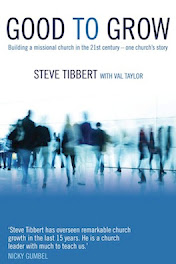Those who make it through into discipleship see the model presented in the local church: if you are serious about mission, you leave this place and join a para-church group, and so the cycle continues. Many times the new believer never makes it into church life, as their allegiance is to the mission organisation through which they were saved. University Christian Unions can be another example of such a separation. Students enjoy CU at university but if they become disconnected from local church life, when university ends they drift and may be lost to the church.
If we continue to operate outside a biblical model we do not address the core issue, which is - how do we make local churches mission focused?
Christian giving is a case in point. Too often the local church is deprived of financial resources necessary to fulfil its God given vision, not because Christians are not generous but because of an imbalance in their giving. According to David Barrett (International Bulletin of Missionary Research - January 05) at the time of his survey, 38% of all Christian worldwide giving went to the local church, and 62% to para-church organisations. While this imbalance continues we should not be surprised to find this has adversely affected church life.
I am aware that organisations such as Wycliffe Bible Translators do specialist work that a local church cannot do; my concern is more to do with what I see as part of normal church life. While many of our heroes of the faith like Hudson Taylor established what we now call para-church organisations, my point is simple - is this a biblical model? We must work to restore the church to its God-given purpose.
Charismatic Gifts in Church History
4 weeks ago






